So what is it?
It’s a brand new watch from Moritz Grossman for 2019 which has a GMT complication that builds upon the beautifully engineered and innovation ATUM Date from 2017.
A strong foundation
When Moritz Grossman launched the ATUM Date* in 2017, I thought it was an act of pure genius. The reason is very simple when you consider the other brands that exist in Glashütte that are already well established. Prior to the ATUM Date, Moritz Grossman did not have a watch in their collection that had a date complication.
*now known simply as the DATE
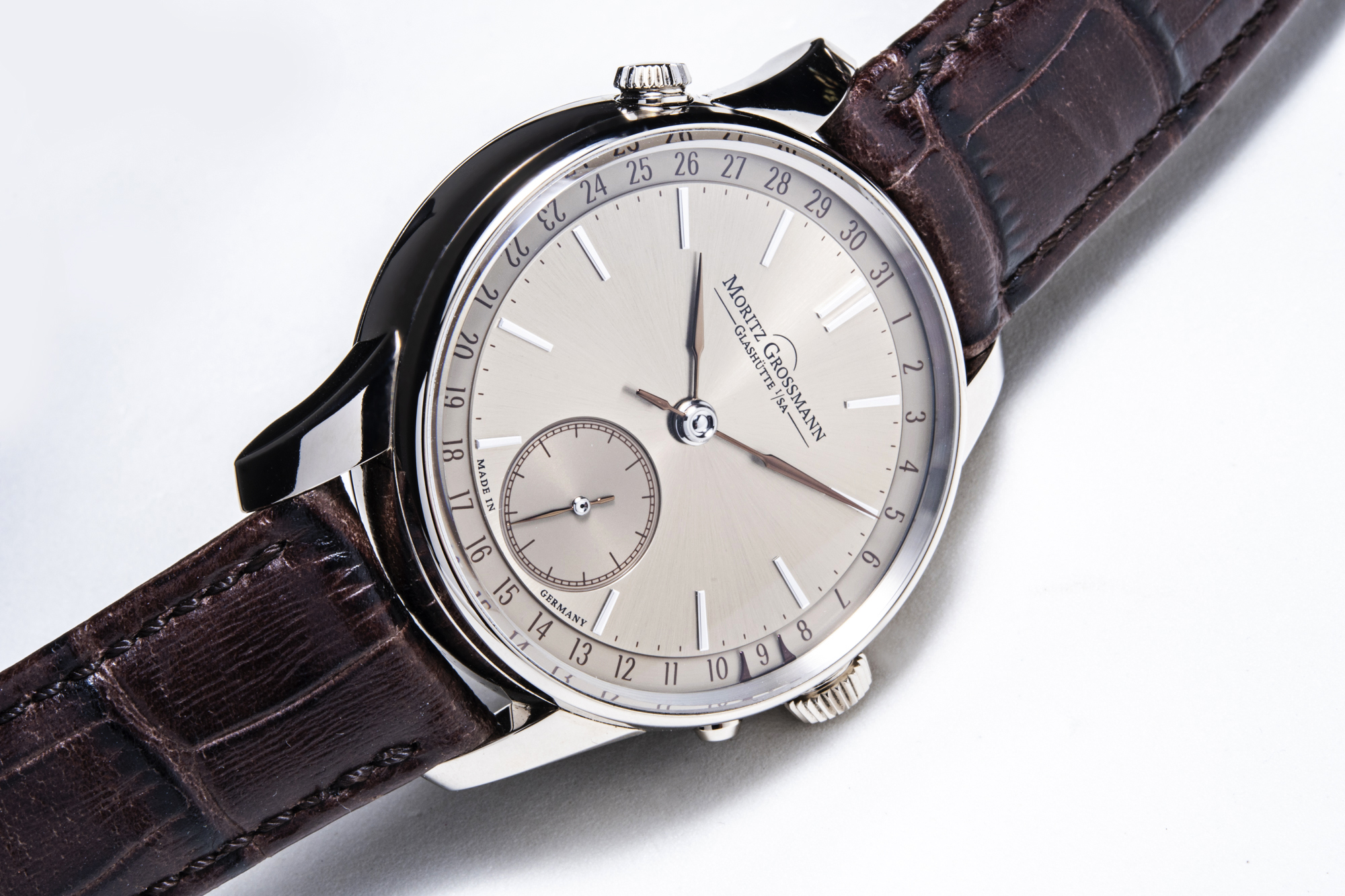
And in my musings over what could potentially come for the brand, I thought that a date complication would be the most logical thing to come next as it would be the most useful. However for Moritz Grossman, making a date complication as you would normally expect, via a little window in the dial, just would not do. For a brand like this used to doing things the hard way, it would have to be quite special
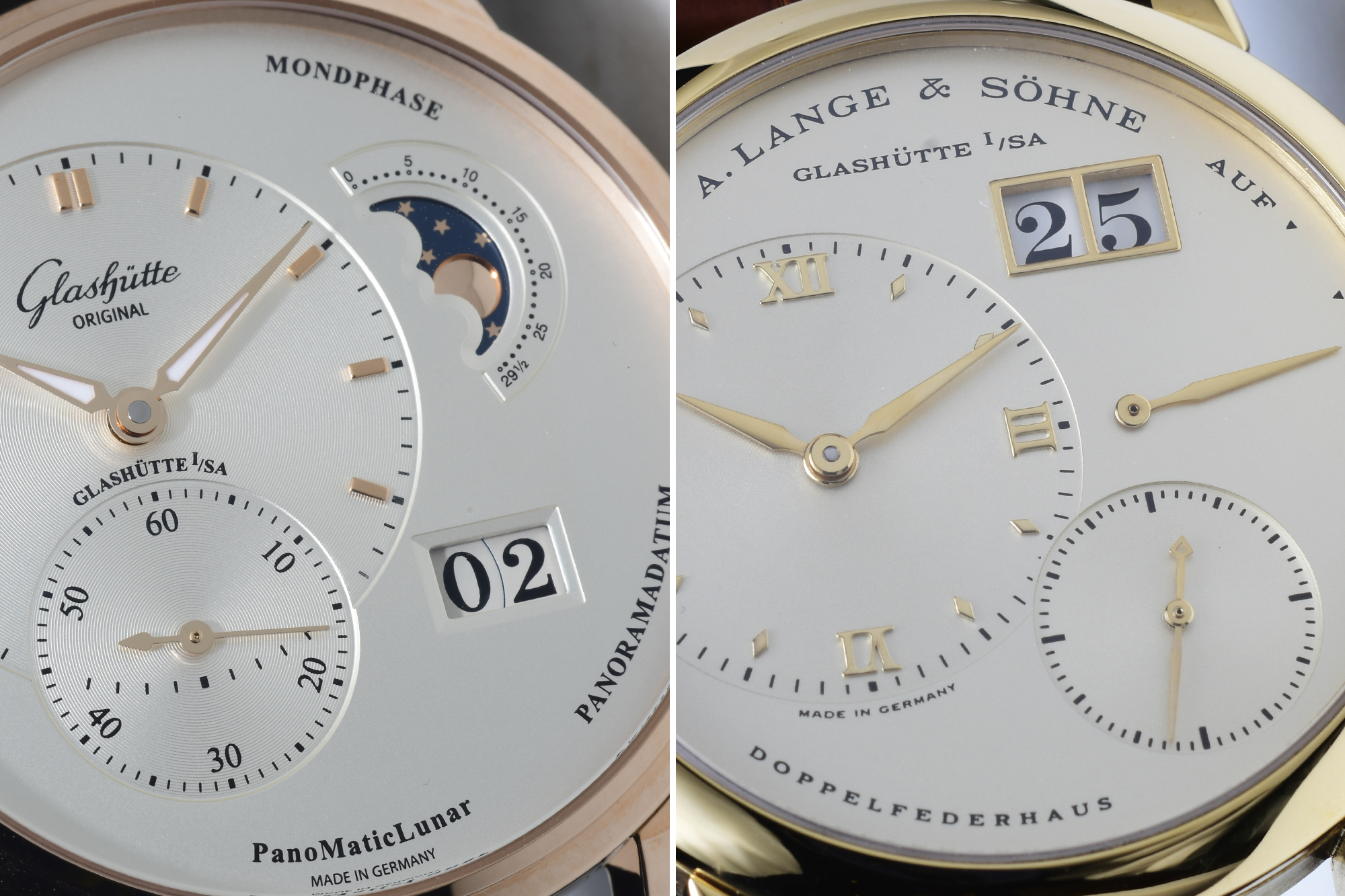
But then there was a problem. If you are Moritz Grossman, you are in the vicinity of two brands that have watches that feature a big date, A Lange & Söhne with their outsized date, and Glashütte Original with their Panorama Date, in your home town of Glashütte in Germany. Even though the way that they implement the feature is different technically, in function, they are the same – to make the date easier to read by making it bigger. With two of Glashutte’s most premium brands already making watches with such a feature, it just would not do for Moritz Grossman to follow the same path.
So what could they do? I thought about this for a long time, and my conclusion was that it would probably be best to avoid the date complication altogether, since there was no way that they could come up with something that would look nice and showcase innovation.
How wrong I was.
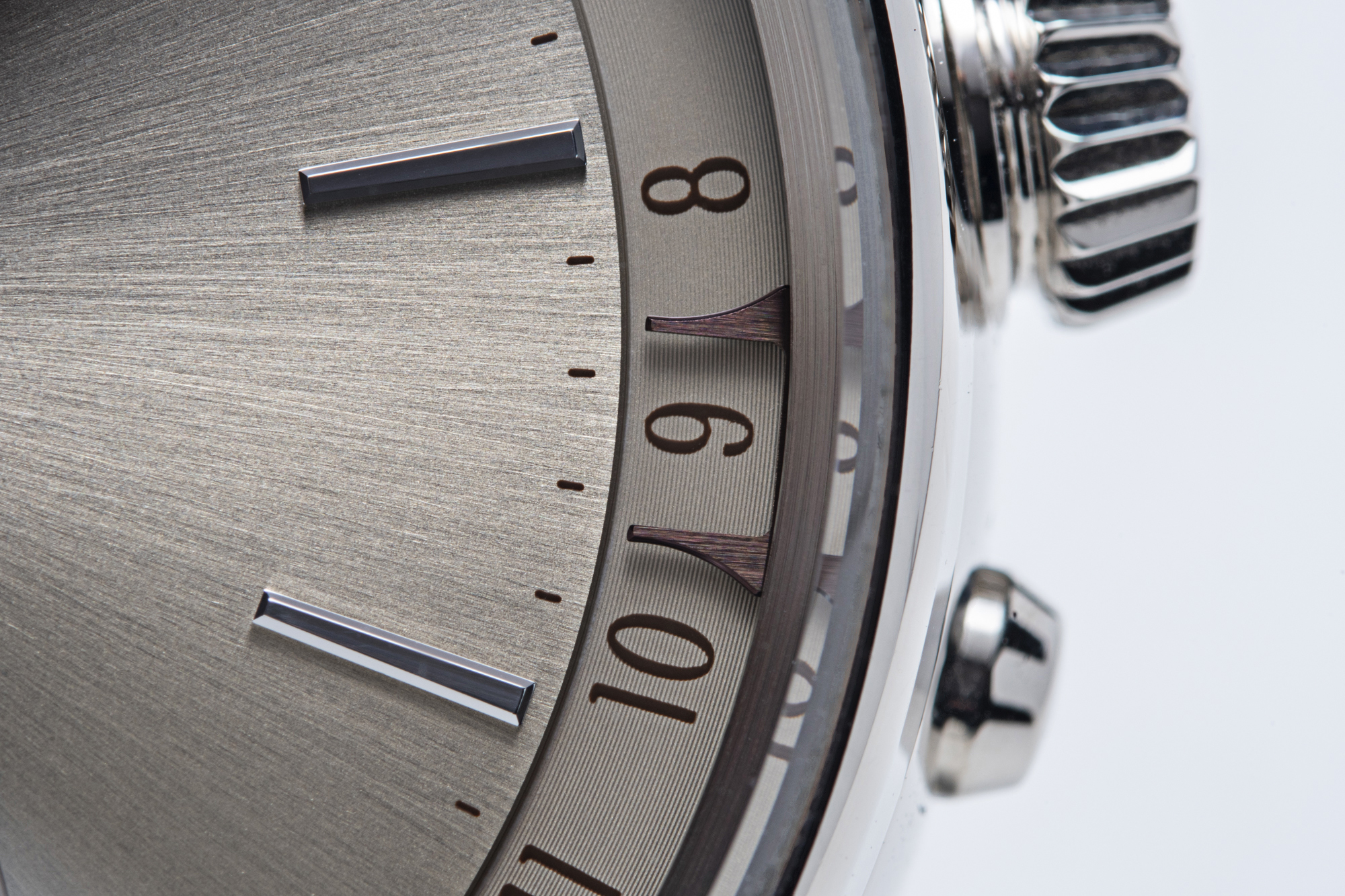
At Baselworld 2017, Moritz Grossman showed me a watch that had a date complication that was unlike anything I had seen. Basically the date works by having two metal fingers that move along the edge of the dial with the date track printed on it, bracketing the numbers to show the current date, and jumping to the next one at midnight. This new (Swiss Patent Pending) system does not work from the centre, but from a peripheral ring, and has the ability to be adjusted in either direction at any time while the movement continues to run. Of note as well is that after the date crown at 10 o’clock is pulled out and turned in the desired direction to line the marker to the current date, when the crown is pushed back, a spring causes the date ring with the marker to precisely engage in the right position.
I was shocked, but in a pleasant way, that this idea had been thought of and executed so well. It was not only innovative and refreshing way, it was also, in the context of needing a differentiating factor from the two other premium Glashütte brands, simply genius.
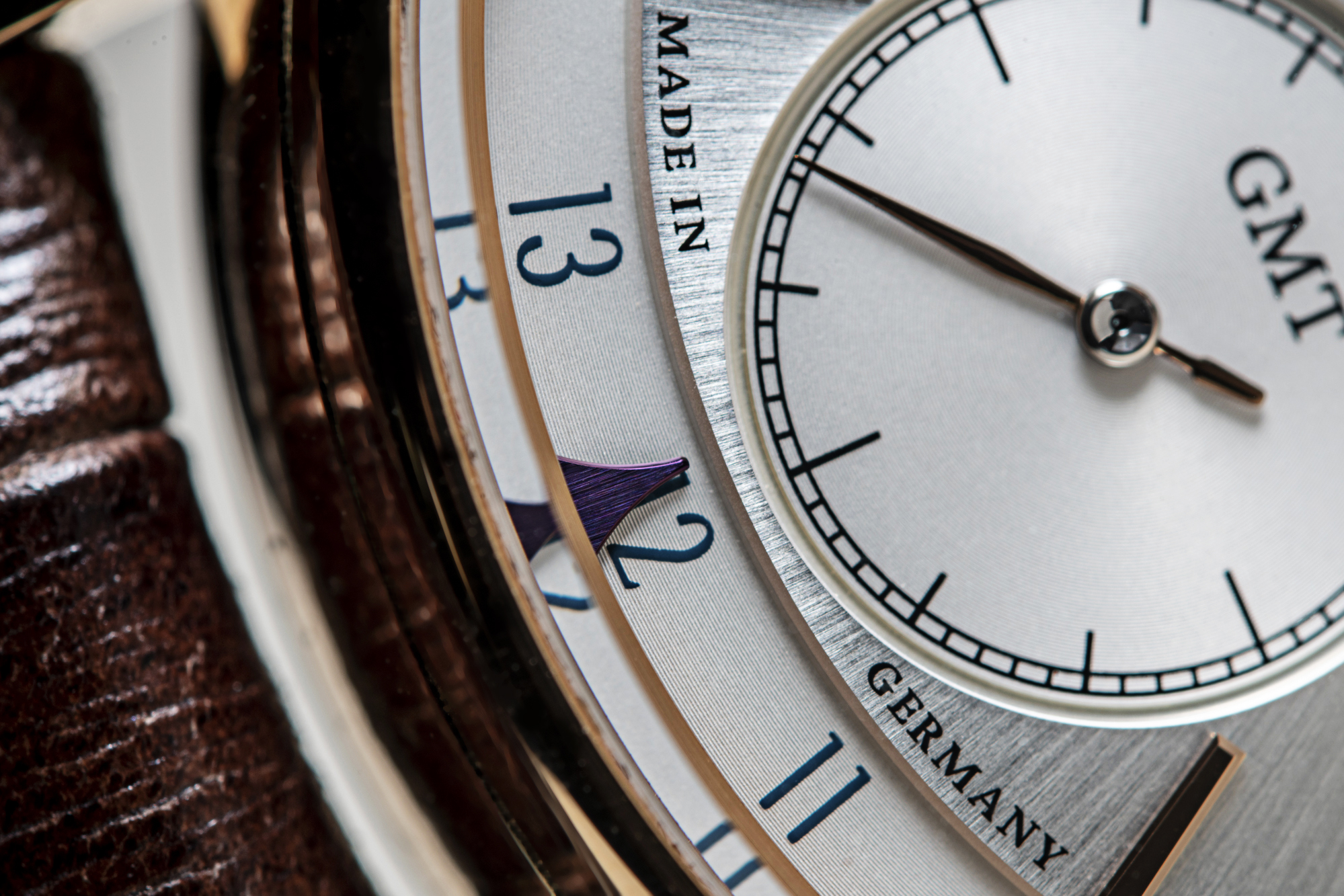
So you might be wondering at this point – why am I talking about the ATUM Date when this article is about the GMT?
The GMT – a continuation of a brilliant idea
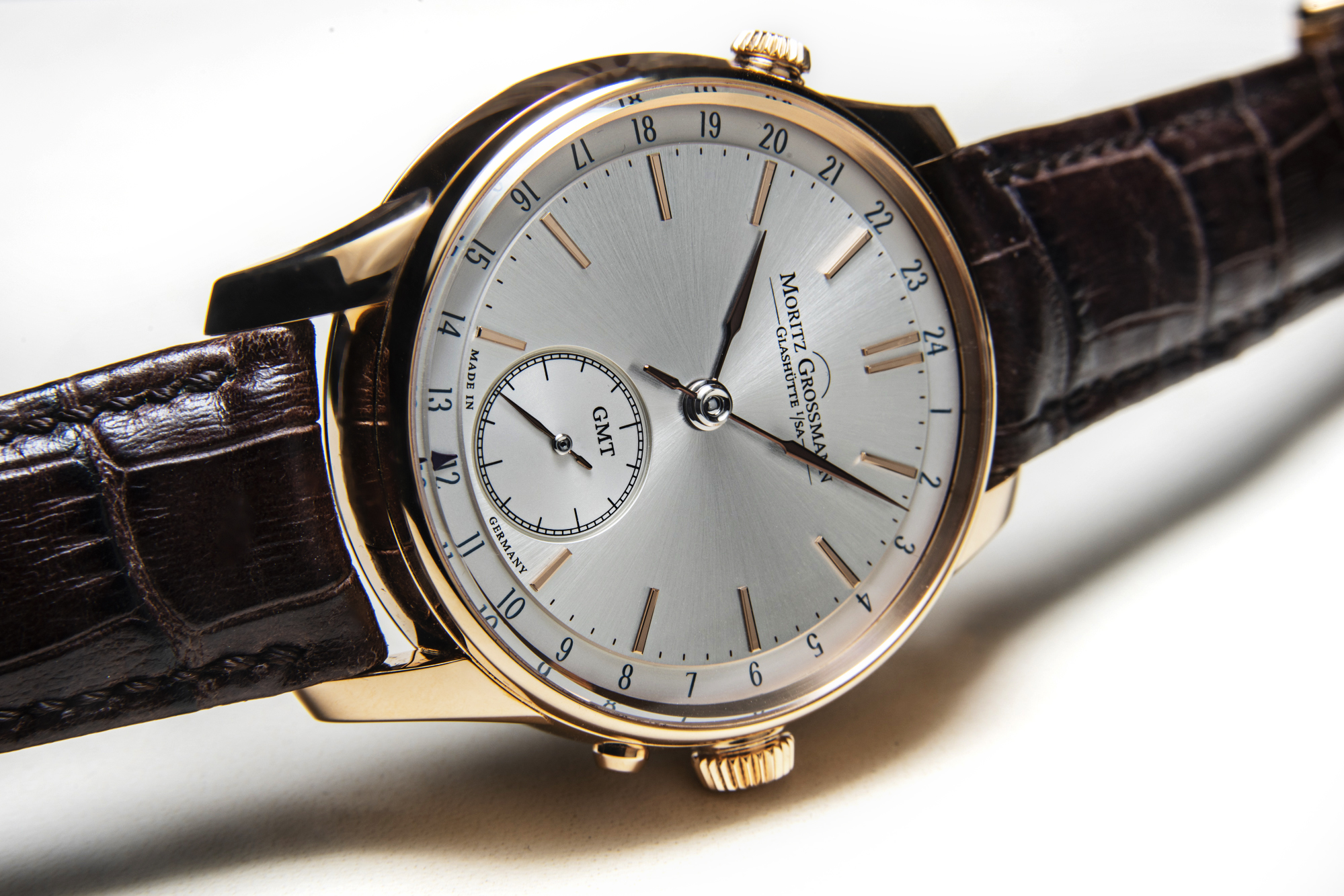

Well the new GMT basically takes off from where the ATUM Date left off, essentially using the same innovative system that was invented, and applying some new modifications to achieve the GMT function.
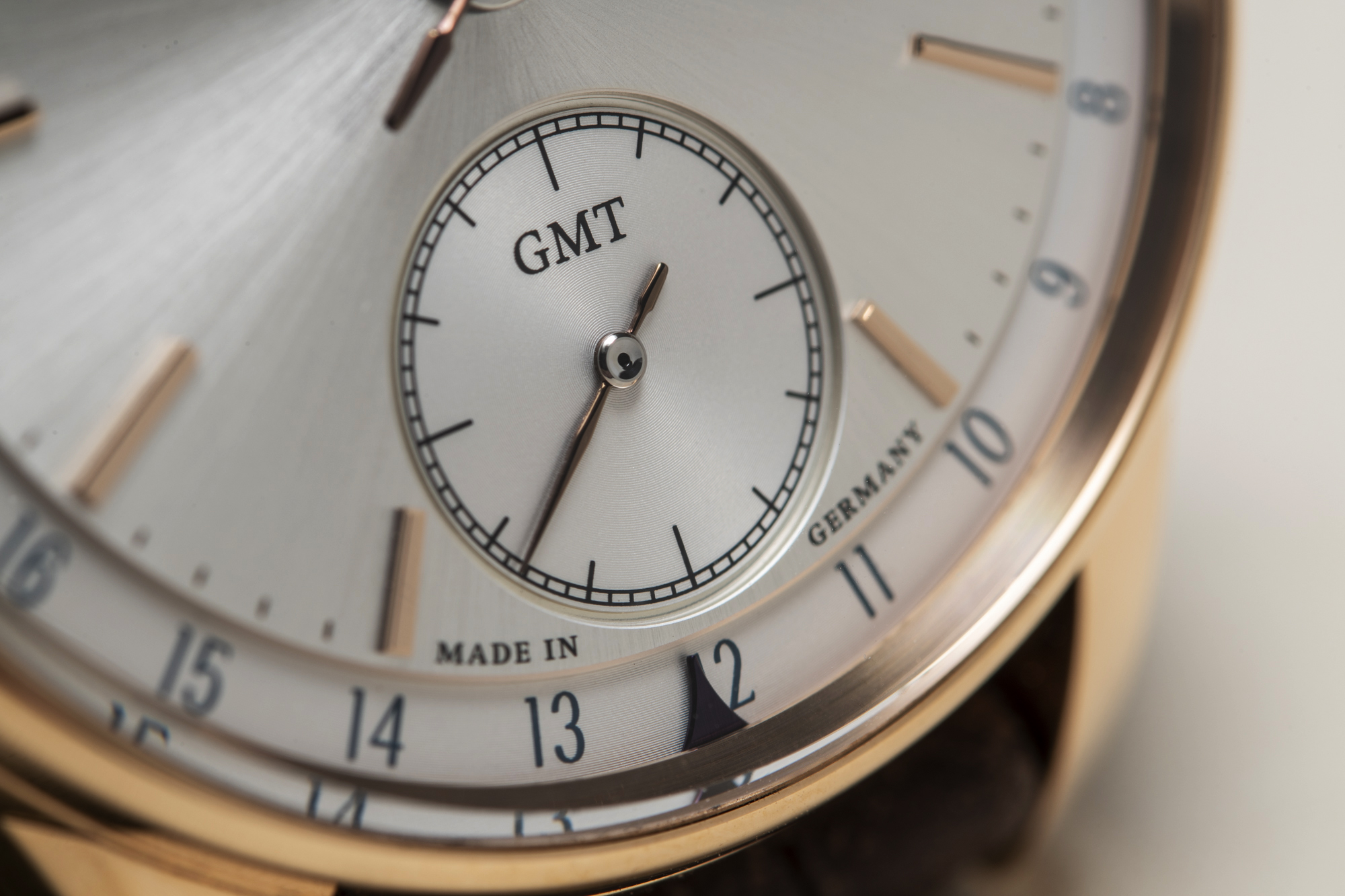
So here, instead of making the metal finger brackets jump every 24 hours in the DATE, now, a single metal finder jumps every 1 hour to indicate GMT. Similarly, the system is adjusted with the crown at 10 o’clock, and likewise, it can be done forwards and backwards at will.
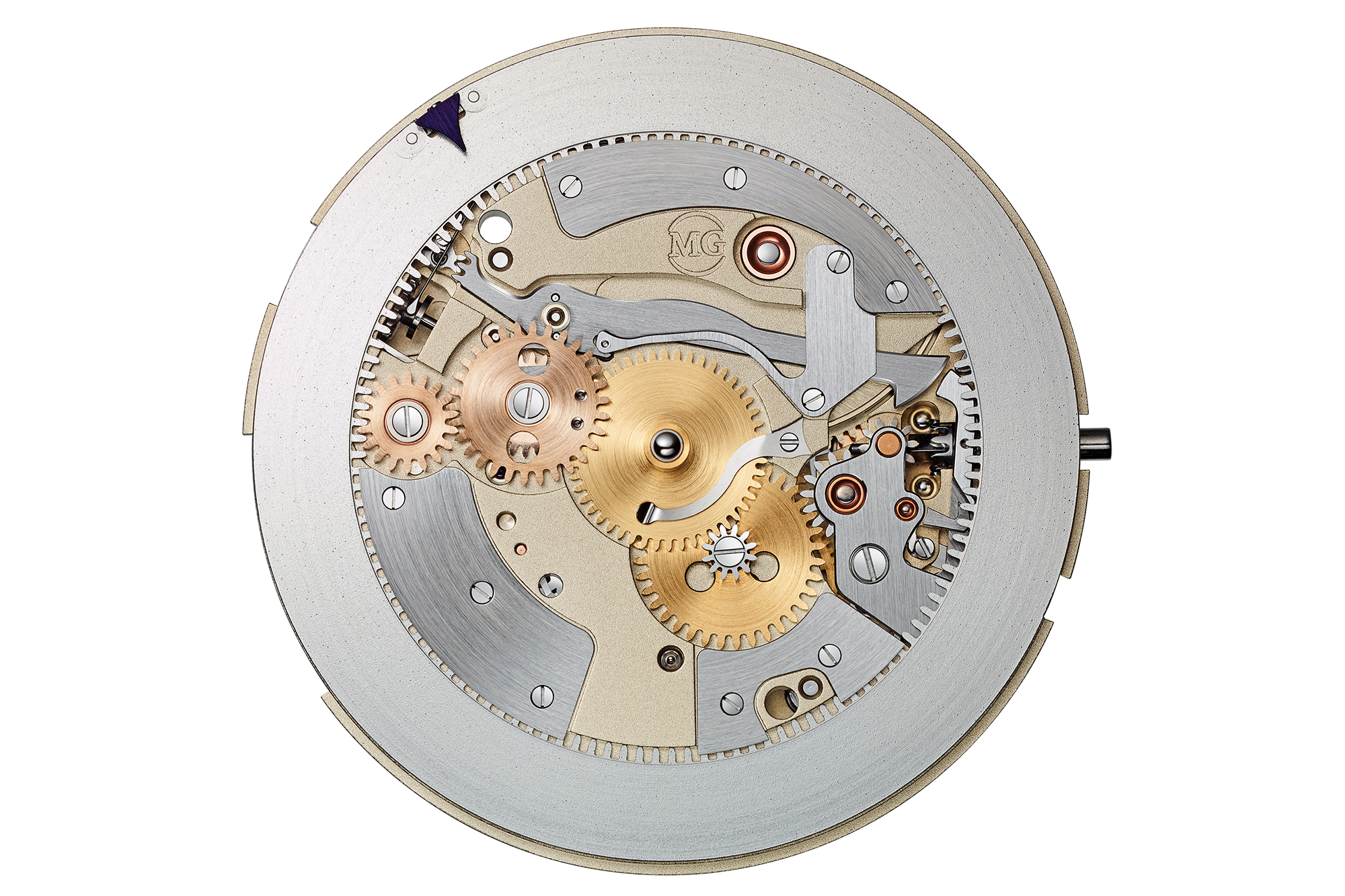
So if you’re thinking about the way it works, you might suddenly realise that this watch is not a true GMT, in the sense that the GMT hand stays constant, while adjustment is performed on the local hour hand, depending on the new timezone that you are travelling to.
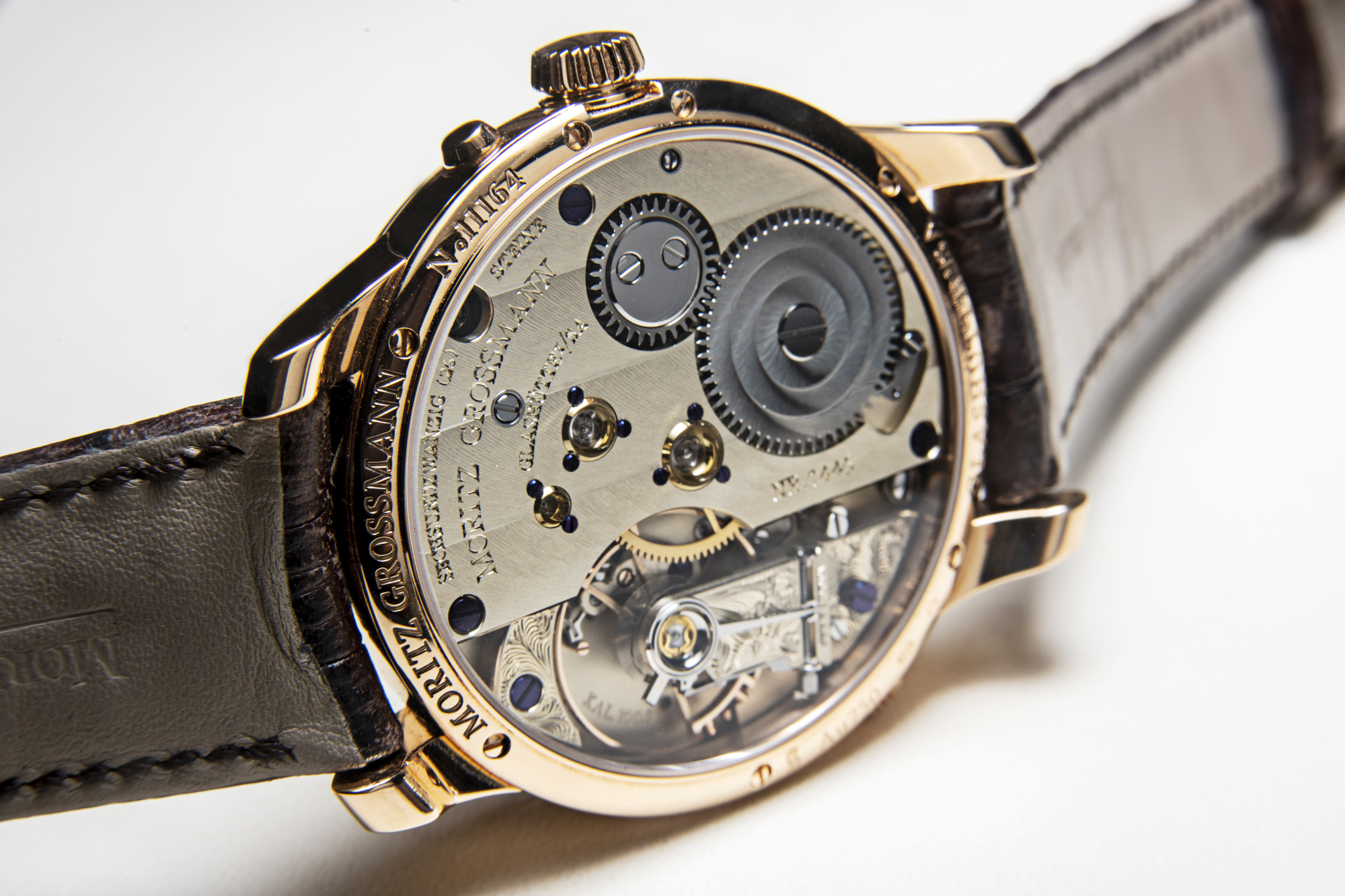
Yes, this is true, and it is a function of the fact that the technical design came from the ATUM Date. Yet really, when you consider how the complication performs its function and the innovative way that it came about, I think that the horological judge in me, finds this fact wholly acceptable.
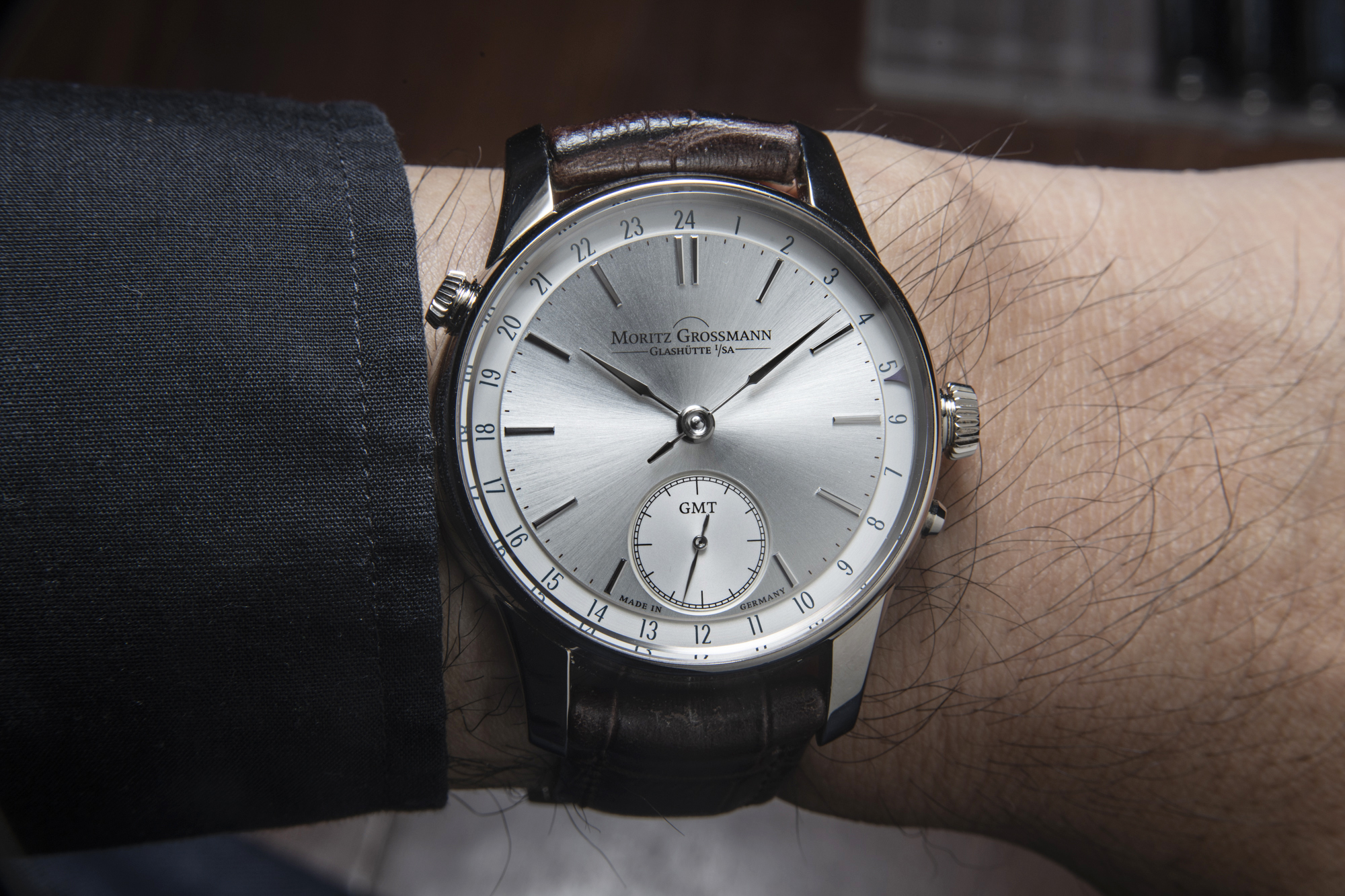
The GMT comes in a 41mm case and is available in 18K rose or white gold with champagne and silver dial options. It sits very nicely with a case thickness of 11.85mm, which unsurprisingly is also the same case thickness as the ATUM Date.
Necessity is the mother of invention.
As a concluding thought, I’ve been very impressed with the way that Moritz Grossmann has developed and grown over the past 10 or so years. Since CEO, Chrstine Hutter founded the brand in 2008 with only a mailbox, and working from her kitchen table in Glashütte, the brand has progressed slowly but surely, and in the intervening years, the company has grown to 50 employees and has produced a full collection of beautiful watches with a clear identity.
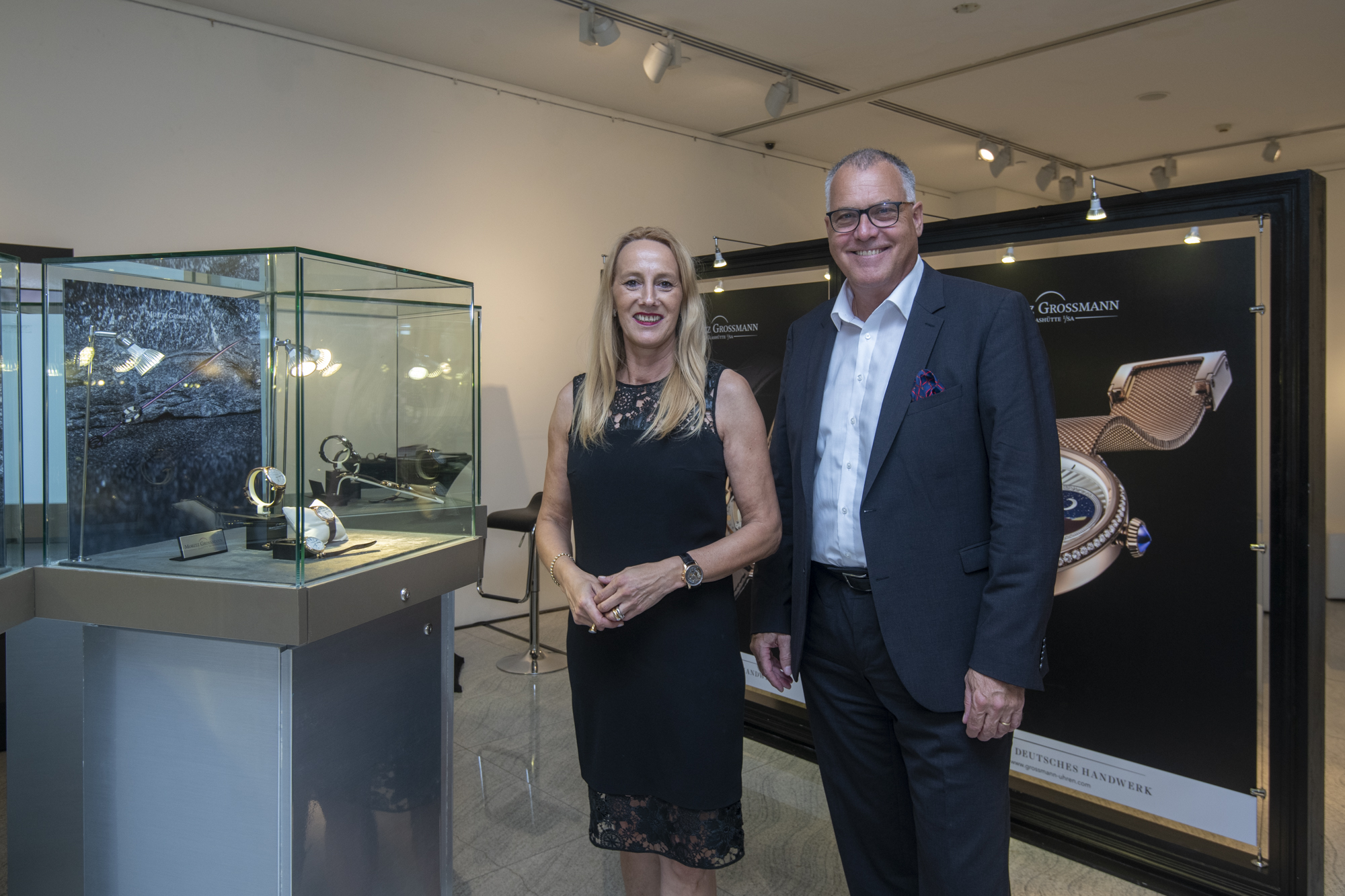
What she has achieved in this relatively short time is nothing short of amazing and her efforts deserve to be applauded. Even more amazing is the fact that she has directed her team to produce watches that have strong differentiation factors from her two established neighbours, producing watches like the ATUM Date, the self-winding HAMATIC, and the BENU Tourbillon.
Now let’s see how the brand can innovate further, and come up with a watch with both a date and a GMT. If they succeed, it should be quite a special watch.
[ninja_tables id=”2430″]


